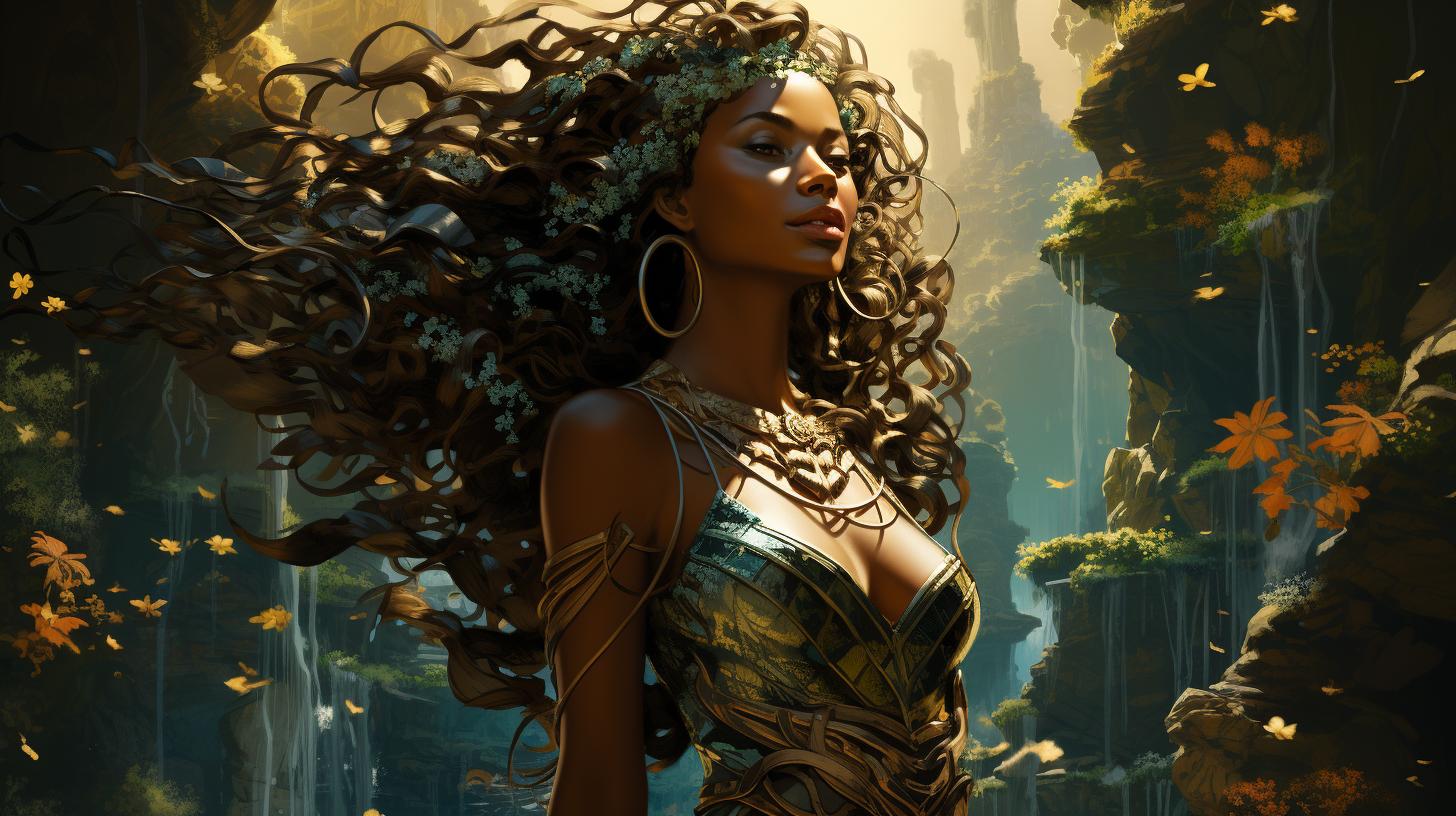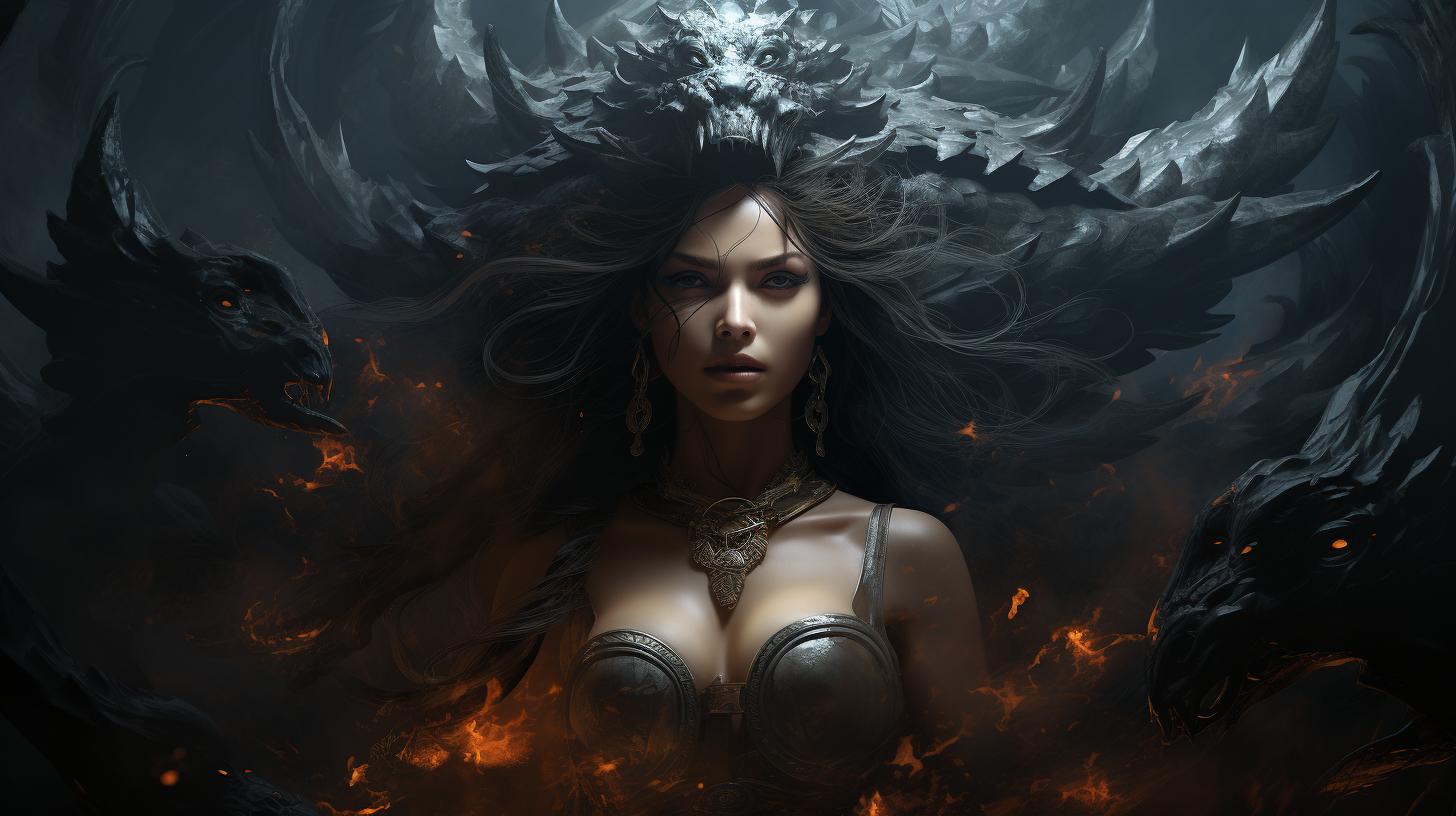Damkina Goddess: Exploring the Mythology and Significance in US

Damkina goddess, a prominent figure in Mesopotamian mythology, holds various connections and associations with other deities. She was the wife of Enki and potentially linked to Ninhursag. Comparisons have been drawn between Damkina and Greek goddess Demeter, as well as Irish deity Danu. Represented in seals and associated with the constellation Carro del Cielo, Damkina embodies purification rituals and intercession.
Additionally, she symbolizes fertility and motherhood. Venerated in cities like Eridu, Malgium, Nippur, Sippar, and Kalhu, Damkina’s significance spans historical and cultural contexts. Her influence extends to Babylonian and Assyrian mythology.
Connections and Associations with Other Deities
Within the realm of Mesopotamian mythology, Damkina goddess holds significant connections and associations with other deities. These relationships shed light on her role and importance in the pantheon. Let’s explore two notable aspects: her relationship with Enki and Ninhursag, and her comparison with other prominent goddesses like Demeter and Danu.
Relationship with Enki and Ninhursag
As the wife of Enki, Damkina shares a divine union with this prominent deity.
Their relationship is an integral part of Mesopotamian mythology and often symbolizes the union of goddess and god. Together, they embody the forces of creation, fertility, and wisdom. Additionally, Damkina is linked to Ninhursag, another significant goddess in Sumerian mythology.
This connection further emphasizes her role as a prominent figure within the pantheon.
Comparison with Other Goddesses: Demeter and Danu
Damkina’s significance extends beyond Mesopotamia as she bears similarities to goddesses in other mythologies. Comparisons can be drawn between Damkina and the Greek goddess Demeter, both associated with fertility, agriculture, and the nurturing aspects of the divine feminine.
Furthermore, there are parallelisms between Damkina and the Celtic Irish goddess Danu, highlighting common themes of motherhood, creation, and abundance.
Symbolism and Representations of Damkina
Damkina, the Mesopotamian goddess associated with purification rituals, holds significant symbolism in her representations. Depictions of Damkina can be found in cylinders and seals, showcasing her divine presence and role within the mythological narratives.
Depictions in Cylinders and Seals
In ancient Mesopotamia, Damkina was often portrayed alongside Enki and other symbolic hybrids on cylinders and seals. These representations served to establish her esteemed position as the wife of Enki and her connection to various aspects of divine power.
The inclusion of these symbolic figures emphasized her role as a mediator and intercessor between supplicants and Enki.
Connection to the Constellation Carro del Cielo
Astronomy played a significant role in Mesopotamian culture, and Damkina’s association extends to the celestial realm. She is believed to have had a connection with the constellation Carro del Cielo. This celestial alignment further emphasized her divine attributes and demonstrated her influence over cosmic phenomena.
The linking of Damkina to the constellation Carro del Cielo showcases a belief in her celestial power and presence.
Roles and Attributes of Damkina
Damkina, the revered goddess in Mesopotamian mythology, embodies various roles and attributes within the pantheon. These encompass her involvement in purification and intercession in rituals, as well as her association with fertility and motherhood aspects.
Purification and Intercession in Rituals
Damkina held significant sway over purification rituals in ancient Mesopotamia. She was believed to possess the power to cleanse supplicants of impurities and mediate on their behalf before her divine consort, Enki. Through her intercession, she played a vital role in facilitating communication and granting blessings to those in need.
This sacred duty bestowed upon her highlights Damkina’s importance as a conduit between mortals and the divine.
Fertility and Motherhood Aspects
As the embodiment of the Diosa Madre, Damkina’s association with fertility, growth, and motherhood is paramount. She is venerated as the creative force behind new life and the nurturing presence that ensures the well-being of children.
Expectant mothers sought her favor for a safe and successful pregnancy, delivery, and the subsequent nurturing of their offspring. Damkina’s influence extended to the realm of agriculture, fostering abundant harvests and sustaining the cycle of life.
Damkina’s divine presence and attributes resonated deeply within the lives of the Mesopotamian community, offering solace, guidance, and abundance. Her roles as a purifier and intercessor, coupled with her association with fertility and motherhood, cemented her significance within the pantheon and encapsulated the profound reverence bestowed upon her.
- Her role as a purifier and intercessor emphasized her importance in facilitating communication between mortals and the divine.
- She was revered as the embodiment of the Diosa Madre, representing fertility, growth, and motherhood.
- Damkina’s influence extended to agriculture, ensuring bountiful harvests and the sustenance of life.
Veneration of Damkina in Different Cities
Veneration of Damkina, the revered goddess of Mesopotamian mythology, spanned across several cities within the region.
As a deity associated with fertility, purification, and intercession, her worship sites were spread throughout the ancient land.
Worship Sites: Eridu, Malgium, Nippur, Sippar, and Kalhu
Damkina was highly revered and worshipped in various cities, each contributing to her cultic practices and beliefs. Some of the prominent worship sites dedicated to Damkina include:
- Eridu: The ancient city of Eridu, located in southern Mesopotamia, was one of the primary centers for the worship of Damkina.
The people of Eridu celebrated her as the divine mother and nurturer.
- Malgium: Damkina’s veneration extended to the city of Malgium, where her devotees sought her blessings for fertility and protection.
- Nippur: In the city of Nippur, Damkina’s worship centered around her role as the intercessor between supplicants and her husband Enki. The people believed that she would listen to their pleas and advocate on their behalf.
- Sippar: Sippar, an ancient city of great significance, also had dedicated temples and rituals devoted to Damkina.
Here, she was celebrated for her role in purification rites and as a patroness of childbirth.
- Kalhu: The city of Kalhu also held a special place in the veneration of Damkina.
The worshippers sought her favor for abundance, growth, and the well-being of their communities.
Cultic Practices and Beliefs Associated with Damkina
The cultic practices and beliefs surrounding Damkina varied across these worship sites, reflecting the unique customs and traditions of each city. Her devotees engaged in purification rituals to seek her blessings, offer prayers for fertility, and ensure a prosperous future.
The beliefs accompanying her worship included viewing Damkina as the sacred link between the divine realm and humanity. It was believed that through her intercession, people could gain favor and protection from her husband Enki, the god of wisdom and creation.
Moreover, the cultic practices associated with Damkina involved offerings, ceremonies, and processions to honor her divine presence. Pilgrims and supplicants flocked to the temples dedicated to Damkina, seeking her guidance and assistance in various aspects of life.
The ongoing veneration of Damkina in different cities showcases the enduring influence and importance of this revered goddess within Mesopotamian culture and religion.
Historical and Cultural Context of Damkina Goddess
The historical and cultural context of the Damkina goddess is deeply intertwined with ancient Mesopotamian society and religion. Understanding the significance of Damkina requires delving into the social and religious beliefs of the time.
Ancient Mesopotamian Society and Religion
Ancient Mesopotamian society, centered in the Tigris-Euphrates river valley, thrived as one of the earliest urban civilizations. The people of this region had a complex social structure, with kings, priests, and commoners playing distinct roles.
They excelled in agriculture, trade, and the development of writing.
In Mesopotamian religion, gods and goddesses held an essential position, influencing every aspect of life. The people believed in powerful deities who controlled natural phenomena, fertility, and other vital aspects of human existence.
Rituals and religious practices formed integral parts of their everyday lives.
Influence and Legacy of Damkina in Babylonian and Assyrian Mythology
Damkina’s influence extended beyond her association with Enki and her central role in the mythology of ancient Sumer. As Babylonian and Assyrian civilizations arose, Damkina continued to hold importance in their religious systems.
In Babylonian mythology, Damkina was identified as the mother of Marduk, the supreme god of Babylon. She played a crucial role in the creation epic Enuma Elish, where she birthed Marduk and offered him support in his battle against the primal chaos.
Similarly, in Assyrian mythology, Damkina’s prominence persisted, and she was revered as one of the significant deities in their pantheon. Her power and influence were acknowledged, with her status often linked to fertility and protection.
Significance of Damkina’s Legacy
- Damkina’s connection to multiple civilizations underscores her enduring influence throughout different historical periods.
- Her association with Enki and role as a mother figure reflects the importance of family and fertility in ancient Mesopotamian culture.
- As a goddess associated with purification and intercession, Damkina provided guidance and protection to supplicants, reinforcing the role of religion in society.
- Her symbolism in seals and the Carro del Cielo constellation highlights the Mesopotamians’ deep understanding and observation of celestial bodies.
- The continued worship of Damkina in various cities attests to her ability to adapt and maintain relevance within different local traditions.
In conclusion, the historical and cultural context of the Damkina goddess is rooted in ancient Mesopotamian society and religion.
Her legacy extends beyond Sumer and encompasses Babylonian and Assyrian mythology. Her role as a mother figure, intercessor, and purifier reflects the values and beliefs of the people. Damkina’s continued veneration in different cities is a testament to her lasting impact on the cultural and religious fabric of Mesopotamia.
.




















